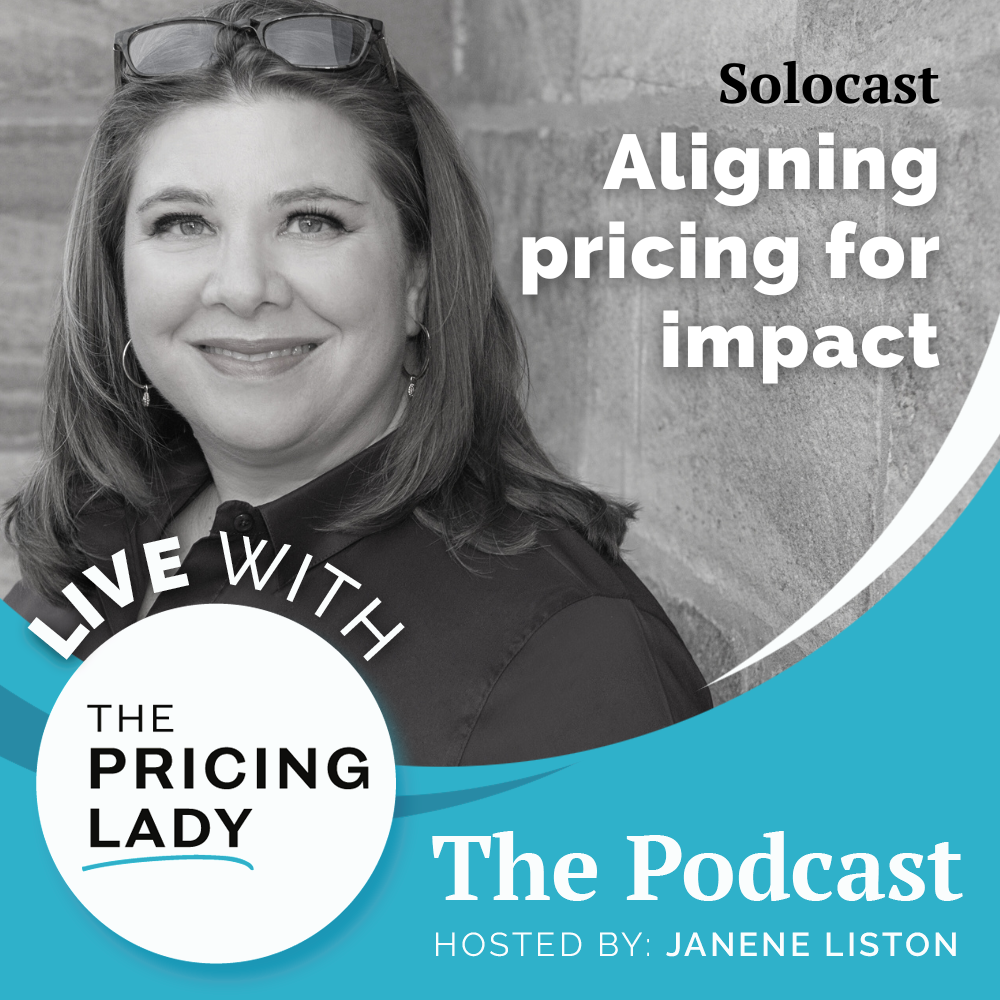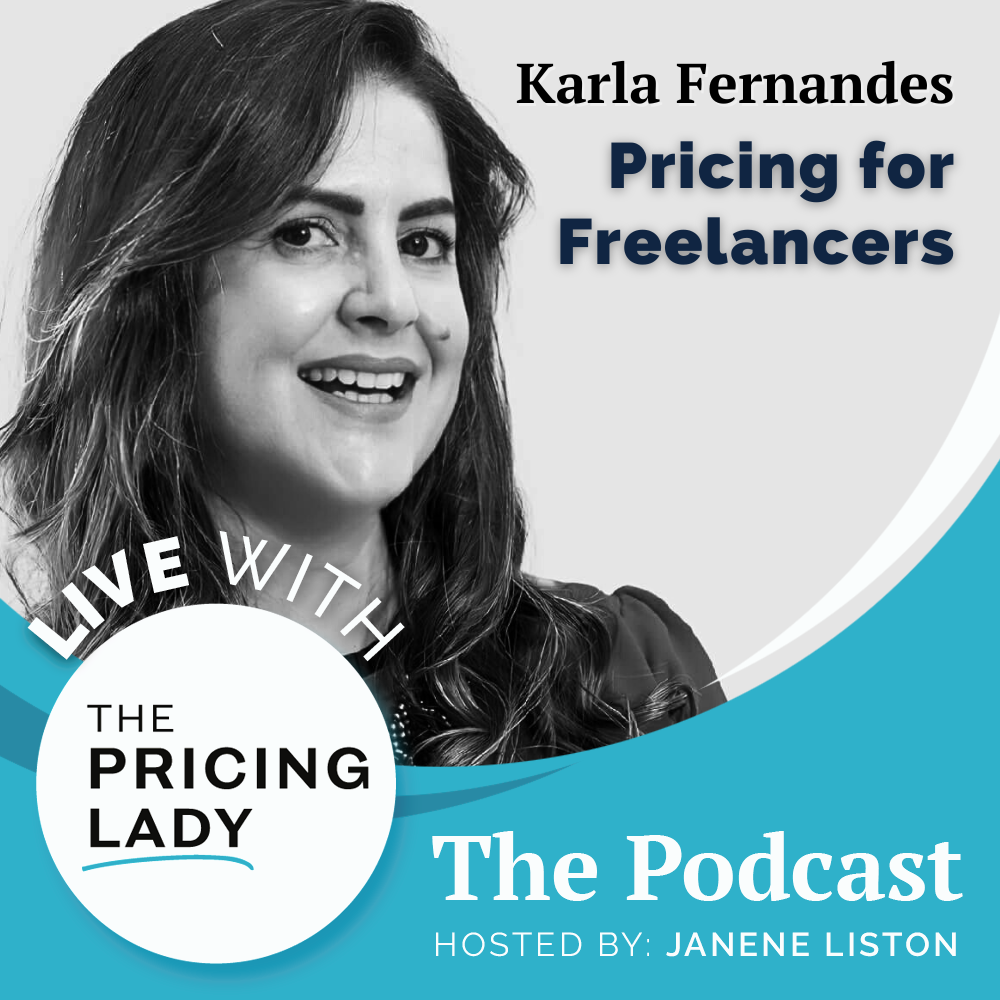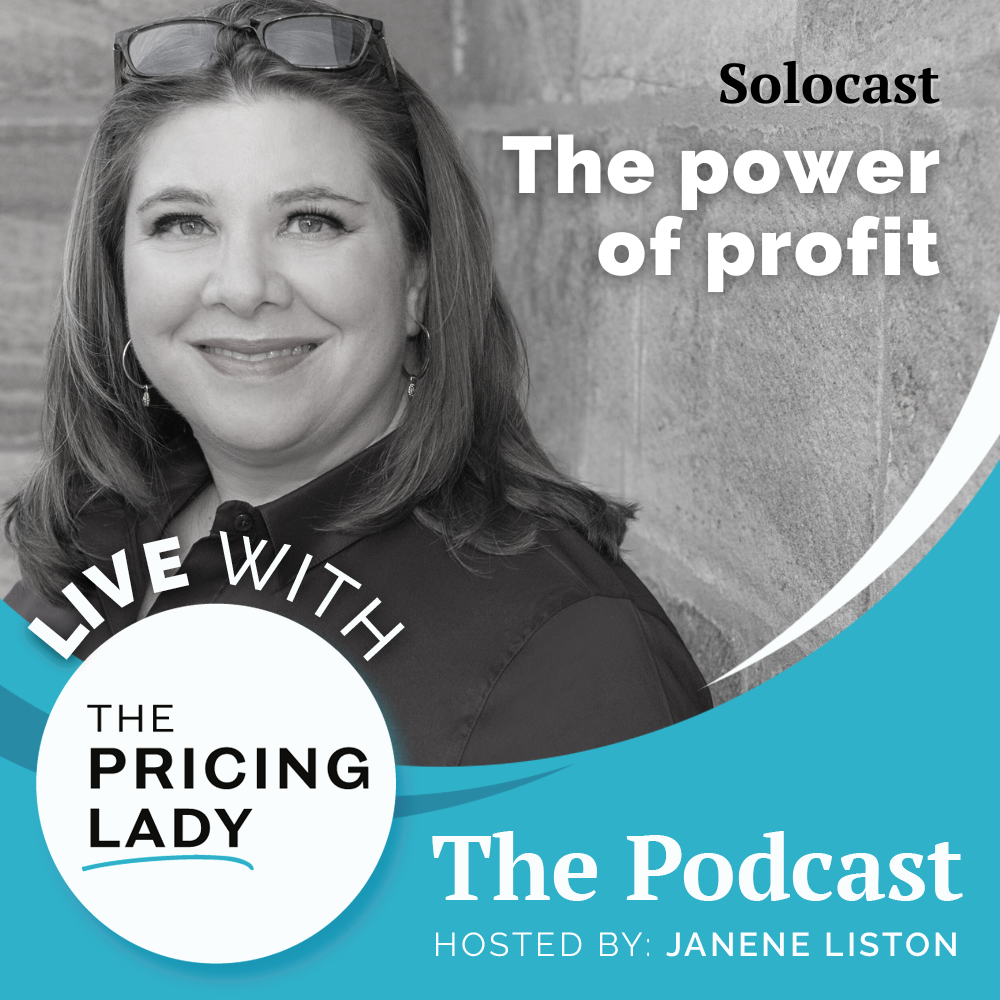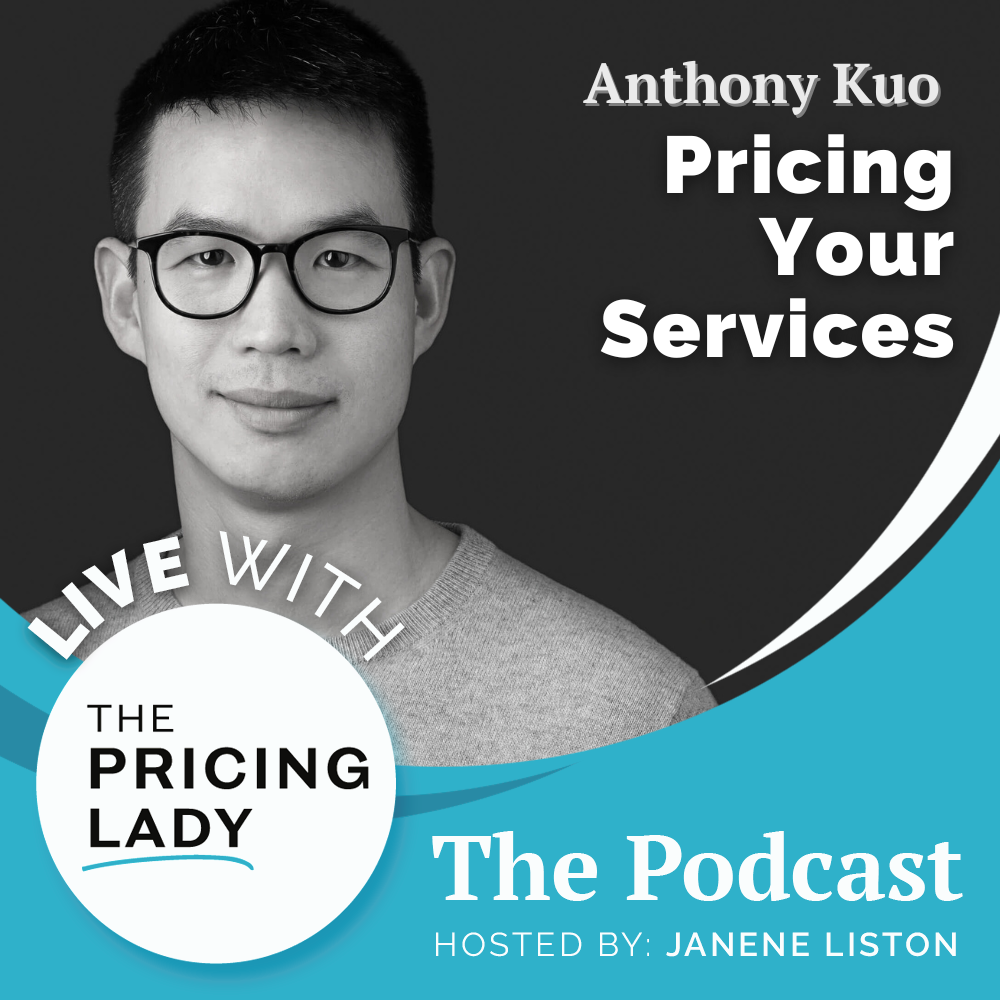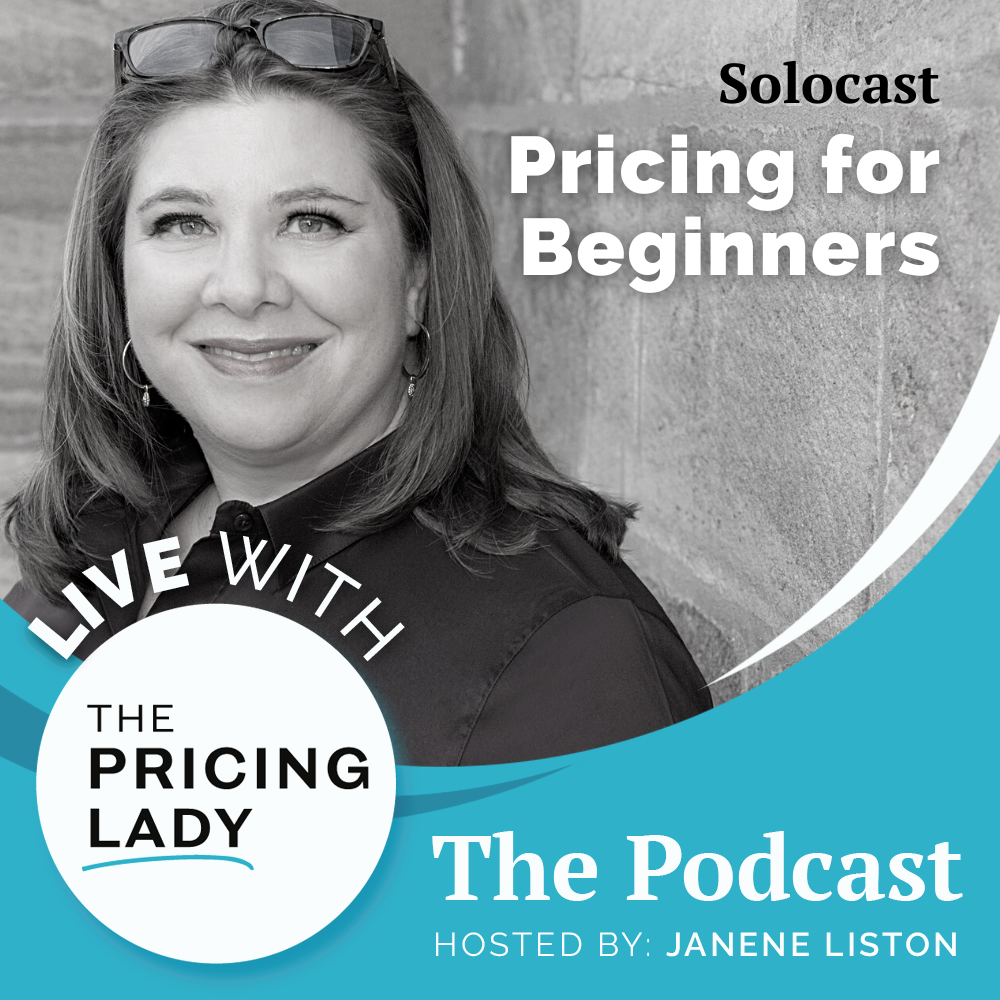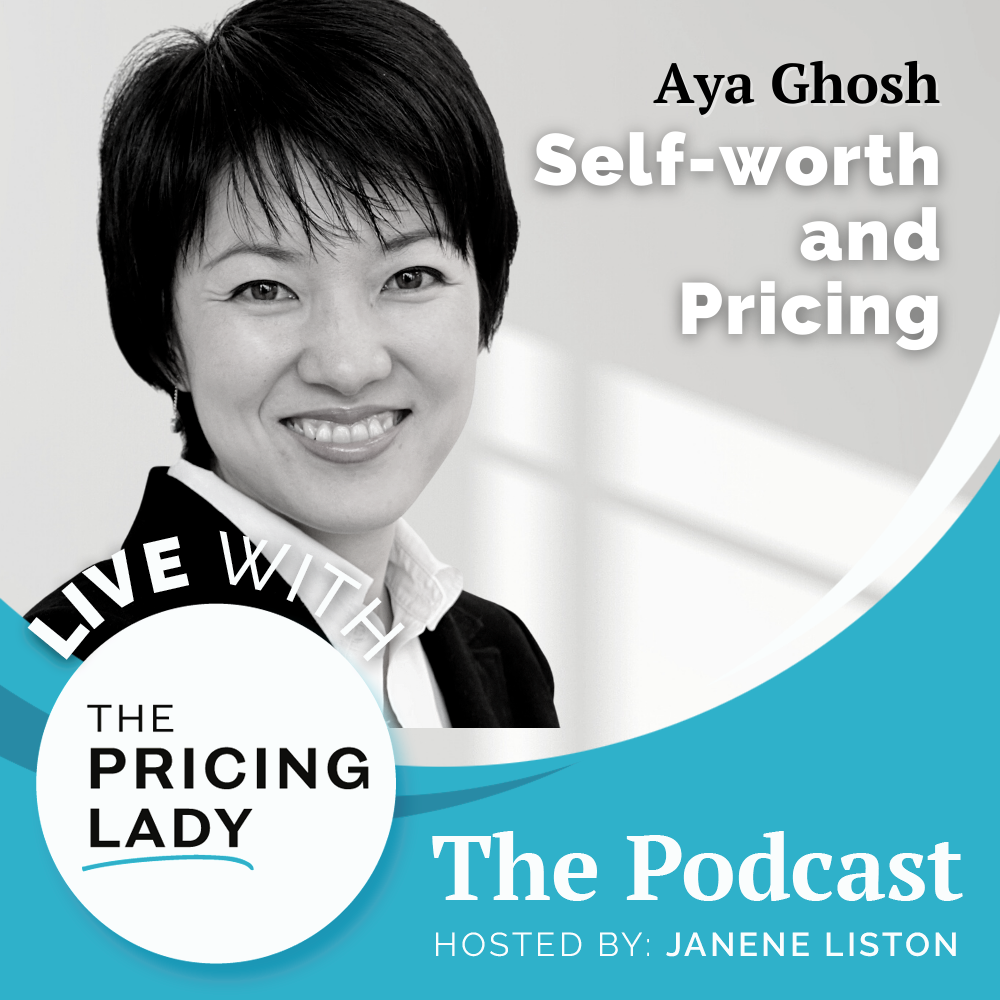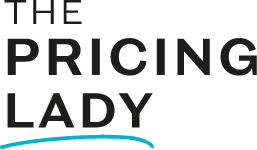Do you find yourself wondering how flexible your pricing should be?
In the world of business, pricing isn’t merely a numbers game—it’s an art of balance. And finding that delicate balance between flexibility and complexity can make or break your business.
On the one hand it’s great to try and meet the specific needs of each individual client, as each one is unique. But flexibility isn’t always the best thing for you, your business or your customers. It’s more complex a decision than just meeting the customers needs – if you want to achieve the right level in your flexible pricing you’ll want to be more strategic in your approach than that.
And hold on, what about the downsides of working in this way? How does a flexible pricing approach impact your ways of working in your own business? And what downsides are there for clients? Yes, there are some.
Well if you’ve asked yourself these questions, you’re in the right place.
In This Episode
In this episode of Live with The Pricing Lady, I’ll shed some light on the topic of flexibility in your pricing strategy and equip you with actionable insights to help you decide what’s right for your business. We look at:
- The Advantages: Learn how pricing flexibility can lead to tailored solutions, scalability, and agility in meeting your customers’ unique needs.
- The Trade-Offs: Explore the downsides of pricing flexibility, including customer confusion, perceptions of unfairness, and profit erosion.
- Actionable Strategies: I share practical tips to help you strike the right balance in your pricing approach. From segmentation and clear tiers to modular pricing and value-based flexibility, there are several options to help you choose the level of and mitigate the downsides of flexibility.
Whether you’re new to the business world or a seasoned pro, this episode will equip you with the knowledge to simplify your pricing strategy while keeping your customers happy.
Podcast Episode Highlights
- 0:00 Intro
- 2:41 Advantages of Flexible Pricing
- 4:12 Trade Offs that come from Flexible Pricing
- 8:19 Effective Pricing Strategies
- 14:02 Transparency and Simplicity
- 16:02 Wrapping it Up
Favorite Quotes
“You can have flexible pricing regardless of whether you’re offering products, services, or software, or a combination thereof.” Janene
“If you have a product that you make bespoke, based on customer requests, or if you offer a service or software that’s a tailored solution. Of course, if your pricing is flexible, it’s much more easy to offer customized solutions for your customers, for your clients.” Janene
“When you have flexible prices, that usually means you’re selling the same offers at different price points to different customers. If there’s a lot of transparency and they find out, that can create this perception of unfairness.” Janene

“Flexibility in pricing usually comes at the expense of complexity.” Janene
“Varied offers are a great way to have flexibility in your pricing taking the risk of people feeling like they’re paying different prices for the same thing.” Janene
“I know you want to be customized for everyone. It’s possible to customize and still have a modular structure behind your pricing.” Janene
“Be appropriately transparent if you need to be. Yeah. But don’t be overly transparent. It will make it harder for you.” Janene
Episode Links
Want to learn how to set your prices? Join The Fair Price Formula group program and learn how to set prices for your business with more confidence.
Rate, Review and Follow the Show on Apple Podcasts
“I’ve just found my Pricing Resource!” … “A binge worthy podcast.” … “I learned so much about how to improve my profitability.”
If that sounds like you, please consider rating and reviewing the pricing podcast. It helps me spread the word to more people and ultimately get more small businesses on the path to sustainable profitability and business success. Click right here, tap to rate with five stars, then select “Write a Review.” Last let me know what you loved most about the episode!
If you don’t already, follow my pricing podcast. New episodes come out every couple of weeks, plus bonus episode. If you’re not following there’s a good chance you’ll miss something. And last, listen to more episodes there are more than 130 episodes to choose from from setting prices to executing them to changing them you’ll find answers to many of your pricing questions.
Reach Out, Connect and Book a Call with Janene
Linkedin | YouTube | Facebook | Email List
Get started improving your business. Beyond this pricing podcast there’s more for you to explore. Sometimes it’s difficult to know where to begin. I suggest you Download the the self assessment Pricing Scorecard to get a view of what’s working and not in your business. Also if you’ve ever wondered “What’s a fair price?” then check out my on-demand webinar “Getting to A Fair Price”. Two great places to get started with pricing in your business today.
Get in touch with Janene, your Business Strategist & Pricing Expert. If you’ve got a business question that needs answering, a pricing challenge you’re facing or you have suggestions for future topics or guests, let me know. Your questions and insights often become episodes. Share yours with me and let’s see where it goes. Contact Janene.
Listen up! Don’t miss out. There’s a lot going on and you’ll want to be in the know. Follow my YouTube channel (rate it too please) so you don’t miss an episode of Live with The Pricing Lady or join my Email List.
Transform your business and life. My mission is to help you build a sustainably profitable business. One where you can confidently charge for the value you deliver. Curious about my coaching and consulting offers, check them out. Let’s see how we can work together. Book a complimentary Call today!
Episode Transcript
Janene: Hello and welcome to Live with the Pricing Lady. I am Janene, your hostess. This show is all about helping you build a sustainably profitable business, helping you to understand the tactics and strategies of pricing so you can create value and charge for it effectively and with confidence. Welcome to the show.
Today, we’re going to be talking about how flexible should your pricing be. Now, let me share with you one little insight before we get started, and that is that flexibility in pricing usually comes at the expense of complexity. So as we’re going through this conversation today, I want you to think about what is the right balance between flexibility and complexity in your business.
So I’ve broken this down into three parts. First of all, we’re going to take a look at the advantages of flexible pricing, and then we’ll take a look at the trade offs or the downsides of flexibility in pricing. And then I have some tips on things that you can do to better understand how flexible to be and how to manage that flexibility.
Let me be clear about one thing before we go further, and that is you can have flexible pricing regardless of whether you’re offering products, services, or software, or a combination thereof. So it’s very important, as I go through this today, I want you to think about what’s going to be suited, mostly for your business, because of course there are some aspects of what we’re talking about that are not suitable for all.
Advantages of Flexible Pricing
All right, let’s take a look at those advantages. The first advantage is tailored solutions. If you have a product that you make bespoke, based on customer requests, or if you offer a service or software that’s a tailored solution. Of course, if your pricing is flexible, it’s much more easy to offer customized solutions for your customers, for your clients.
Second of all, it’s also easier to manage the budget. Right? So to hit their budget is actually what I mean, not to manage it necessarily, but to hit their budget. So if you can adjust your pricing relatively, if you have a lot of flexibility there, then it’s easier for you to be able to meet lower budgets as need be and also scale up to bigger budgets, which brings me to the next one, which is scalability.
Scalability is also easier when you have a high level of flexibility in your pricing. However, it doesn’t always have to go hand in hand, and we’ll take a look at that in a few moments. The next advantage is that you’re more able to quickly adapt to changes in the marketplace. So if your pricing is a little more flexible, then you’ll have a little bit more agility.
That’s not always good. It depends on your business and what’s important. Is being agile an important part of what you do and how you do it with your customers? That is the question, whether or not that’s something you want to do.
Trade Offs that come from Flexible Pricing
Now let’s take a look at some of the downsides of flexibility in pricing.
Actually, I like to call them trade offs. The first trade off is pricing almost always comes at the expense of complexity. It’s great that you want to be flexible and you want to be able to meet a diverse group of customers’ needs, but that is definitely going to make things more complex for you and your customer.
Doesn’t mean you can’t mitigate it. We’ll talk about mitigations in a few moments. Second of all, it can create confusion. The more flexible your pricing is, it usually will mean there are more options for the customers. And there’s a certain point where you get into decision overload or this decision process breaks down because there are too many options for the customer. That’s why it’s good to be careful about flexibility so that you don’t create confusion.
Next, it can create a perception of unfairness. This perception of unfairness can, quite frankly, impact your brand. For example, when we fly on a plane, we pretty much try not to think about the fact that the person next to us probably didn’t pay as much as we did, or that we didn’t pay as much as they did, right?
We kind of ignore that, even though we know that very seldom will any two people on the plane pay the same price for a ticket. When you have flexible prices, that usually means you’re selling the same offers at different price points to different customers. If there’s a lot of transparency and they find out, that can create this perception of unfairness.
Unintended Consequences of Flexible Pricing
It will have an impact on your brand eventually, for sure. It can create unexpected, air quotes there, “margin or profit erosion”. This comes down to, if you’re planning with a certain price before the year starts. And you do your math and you’re like, okay, this is what it’s going to take for me to be profitable.
And you plan with a certain price, but then throughout the year, you’re selling at lower prices because your pricing is flexible and you’re making adjustments. Then chances are you’re not going to hit the numbers that you thought we were going to hit, unless you do it a lot more volume. But as you know, lower prices doesn’t always guarantee volume.
So you have to be really careful about that. Next, it can create an administrative burden. When you have lots of different prices to manage, then it’s difficult for you in the back end of your business to be able to manage that. I’ve seen this quite often, especially with coaches. Where they start out with a really low price and then the first few customers have that.
Then they get a little bit of confidence to raise the rates, but they don’t raise them for the old customers, just for the new ones. They keep raising them for new ones. After a year or two, they have clients who have all different prices. Because they didn’t manage that, that just kind of evolved into this.
That’s also a flexibility issue. Or it can be that, if you have a product and you’ve played with different prices. You have different prices for different customers as well. That complexity is difficult for you to manage internally. Lastly, it can induce price wars if you’re not careful.
Finding the Right Balance
If the competitors see that you’re quite flexible with pricing, they may try to take advantage of that, putting additional price pressure on you. If you respond to that in kind, then all of a sudden you find yourself in a price war. Price wars, do nobody any good. They are not good for you, they are not good for your competitors, and they are definitely not good for your customers.
You may think that a price where there is a good war is good for customers because they get to pay less. But in the long run they have fewer choices when it comes to purchases in the future and the company that they bought for May no longer be in business when they need extra service. That’s really important to keep in mind.
Those are some of the trade offs that come from flexible pricing.
So all of this begs the question, Oh Janene, pricing goddess, no, Oh Janene, Pricing Lady, what do I do? How flexible should your pricing be? Now the real answer is you need to determine the trade off between flexibility and complexity for your business.
Effective Pricing Segmentation and Alignment
But here are some things that you can do. First of all, segment, segment, segment. Get very clear on the different product or offer segments and customer segments that you have and be clear about which customer segments are, or let me say that differently, which offers are the main offer for each customer segment.
Too often what people will try to do is they’ll try to, you know, every product is good for everyone or every offer is good for anyone. That is really going to be difficult for you because then, when you talk to a customer, you’re like, well, you can do this or this or this or this or this or this or this or this, or this.
Then all of a sudden they’re under this umbrella of possibilities and they’re confused. Segment, and as a result of segmenting, then you can bring certain offers to the table for the right customer and talk about that only. And then if they say, Oh, well, we’d really like this as well, then you can bring that next layer in if you want.
But segmentation can help you do that. Second of all, you want to make sure you understand their needs. The flexibility that you offer should be based on what they value, not on just what is convenient for you or on all the possibilities that you have.
Strategic Pricing Variables
If we put this into context for a moment, if you think about mobile phones. There are so many functions and features in there, if the phone producers had decided to make all of those functions and features also price variables, then it would be so difficult for us to make a decision what to buy. Instead, what they chose to do is they said, it’s important to them the quality of their camera, it’s important to them how much storage capacity they have.
It’s important to them what color the phone is. Aside from brand, those are the three price variables that we have or features that are what they base the pricing on, how flexible it is, it’s based on those three things alone. Why? Because those were the things that in the end were most important to us as consumers.
You want to do something similar with your offer, your product, your service, or your software. When you look at flexibility, what are the most important things that you want to be flexible on, what are your flexibility or pricing variables? But base them on what’s valuable to the customer.
Instead of just changing the price on the same offer or product if you can have a varied offer. Specific offers for each target group are really going to help you because then you don’t have to change the price. It could just be one small difference between offer A and Offer B, but the value that that difference brings allows you to have a different price, which meets the needs of a different target group.
Varied offers are a great way to have flexibility in your pricing taking the risk of people feeling like they’re paying different prices for the same thing.
Simplifying Pricing Structures
The next one is one that I absolutely love. And I have used this even before I was a pricing expert. I used this in the very early days of my career. Make it modular. If you can make your pricing modular, this is especially good for project based businesses and service based businesses. Make it modular. I know, I know you want to be Customized for everyone, but you can still be customized and make the pricing and the structure behind your pricing modular.
You will thank yourself and your customers will thank you as well. So try and make it modular, put it into building blocks. It makes it easier for you to explain, easier for the customer to understand, and then all you have to do is price the blocks. Yeah, that is a great one. Create clear tiers for yourself. T I E R S.
So know when you want to offer what. To whom, under which circumstances, yeah, instead of just going to your customer and kind of laying this table of variables in front of them, right? This big basket of options of what they could have, listen to the customer and then say, you know what? I think this offer would be the best one for you and here’s two options because I heard you mention this and this.
If you have a clear understanding or these tiers set up based on the target customer groups and your offer, it’s going to make it so much easier for you to have the conversations with them or for them to see that on your website. If that’s the way the sales conversations go as opposed to overloading them with too much information up front.
Transparency and Simplicity
Make sure that the flexible variables you use in your pricing are based on value. I think I alluded to that before, but it bears repeating again, value is where it’s at. Be sure that everything you’re doing when it comes to building flexibility in your pricing is leading or coming from a place of what the customer truly values.
But also make sure that you keep it simple for yourself. Lastly, I just love this. I love this phrase. Make it appropriately transparent. Sometimes I find that when people build flexible pricing schemes, they feel like they have to share all that information with the customer.
Now if one of your values in your business is transparency, then you’re going to be more transparent than someone who doesn’t necessarily have that as a value. But that does not mean that you have to or want to give them all the details. For example, if you’re doing a project and you itemize everything on your offer, then that opens the door to have a conversation about the fact that the customer doesn’t really want that.
Now, that may be critical to the project. They may have felt like they’ve already done it, but until you’ve seen the level of “done”, or done it, you don’t really know. If you take that out, it could risk the whole project. I wouldn’t itemize something like that. Be appropriately transparent if you need to be.
But don’t be overly transparent. It will make it harder for you. It also makes it harder for the customer because you put more variables in there or more decisions into what they need to do into their decision making process. That can hurt the whole process of whether or not they’re going to buy something.
Wrapping it Up
I think I’ve given you quite a few things here to think about. There is a lot to this topic of flexibility in pricing, but I think what I want you to keep in mind is the following. First of all, Flexibility and complexity in pricing are linked. The more flexible you are, the more complex it usually ends up being.
So it’s up to you to decide where on that complexity, uh, flexibility, complex scale you want to be. Sorry, that was a funny play on words. Second of all, it should always go back to the customer and what they value. And third. Try. Especially if you’re new in business, try to keep it simple at first.
You can always build complexity and more advanced things into it later, but do try to keep it simple at first. You will thank yourself and your customers will thank you as well.
That is what I wanted to share with you in this episode today. In our next episode, I’m super excited because we have a guest once again on the show.
So we’ll be bringing back the guest episodes for the rest of this year. I very much look forward to that. If you have any questions, please reach out, head on over to thepricinglady.com/Book-a-call, set up a call with me, and let’s talk about what we can do to improve pricing in your business.
I wish you a great day, all the best and enjoy pricing.

